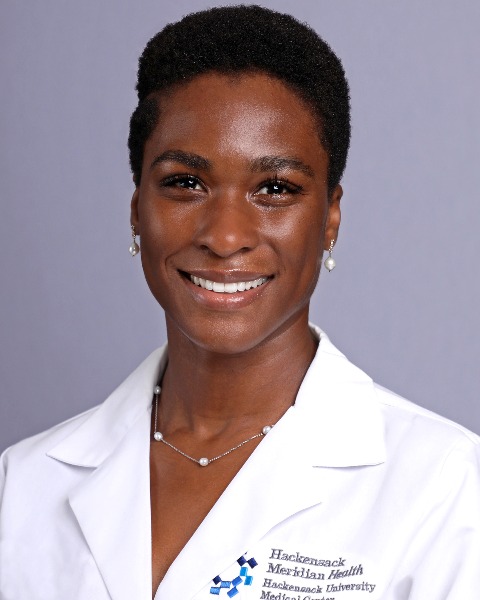Labor
Poster Session 1
(241) Efficacy of Non-pharmacologic Interventions for Antepartum Cervical Ripening in Term Pregnancies
.jpg)
Daniel Martingano, DO MBA PhD
OB/GYN Clerkship Director, Assistant Residency Program Director, Academic Chair of OB/GYN
St. John's Episcopal Hospital-South Shore
Far Rockaway, NY, United States
Rachel Amuzu, DO, MSc (she/her/hers)
Resident Physician, OB/GYN
Rutgers Health, Jersey City Medical Center
Bayonne, NJ, United States- AO
Andrea Ouyang, BS,MS
Medical Student
William Carey University College of Osteopathic Medicine
Baton Rouge, LA, United States 
Marwah Al-Dulaimi, MD
Resident Physician, OB/GYN
St. John's Episcopal Hospital-South Shore
Far Rockaway, NY, United States- SS
Shavana Singh, BSc
Student Doctor, OMSIII
Lake Erie College of Osteopathic Medicine
Far Rockaway, PA, United States - JM
Jessica Marshall, DO
Resident
St. John's Episcopal Hospital-South Shore
Far Rockaway, NY, United States - SR
Sheida Rodriguez, DO
Resident
St. John's Episcopal Hospital-South Shore
Far Rockaway, NY, United States - AU
Alexander Ulfers, DO
Resident Physician
Walter Reed National Military Medical Center
Bethesda, MD, United States - BD
Benjamin Dribus, PhD
Chair, Department of Mathematics
William Carey University
Hattiesburg, MS, United States - JM
Jacqueline Marecheau, MD
St. John's Episcopal Hospital-South Shore
Far Rockaway, NY, United States - DM
Donald Morrish, MD
Chief Medical Officer
St. John's Episcopal Hospital-South Shore
Far Rockaway, NY, United States - KC
Kristin Cohen, CNM, DNP
RWJBarnabas Health, Trinitas Regional Medical Center
Elizabeth, NJ, United States - SS
Shailini Singh, MD
Attending Maternal-Fetal Medicine Specialist
Hackensack Meridian Health, JFK University Medical Center
Edison, NJ, United States 
Antonia F. Oladipo, MD, MSCI (she/her/hers)
Assistant Professor
Hackensack University Medical Center
Hackensack, NJ, United States
Primary Author(s)
Coauthor(s)
Presenting Author(s)
Coauthor(s)
While various non-pharmacologic interventions for antepartum cervical ripening (NPACR) are widely utilized, their effectiveness remains unknown. This study sought to evaluate the effects and potential benefits of commonly used interventions for ACR for pregnant patients at term.
Study Design:
We conducted a multi-center, prospective observational study from 7/2021 to 7/2023 comparing all pregnant patients who received any form of NPACR within the gestational age range of 40 0/7 to 41 0/7 weeks. Interventions considered for analysis included exercise, sexual intercourse, membrane stripping (MS), diet modifications, nipple stimulation, castor oil, evening primrose, and black cohosh. Patients less than 40 0/7 weeks gestation, multiple gestations, or utilized more than one mechanical or dietary intervention were excluded. The primary outcomes included time to spontaneous labor (SL) and the need for pharmacologic induction of labor at late term as a discrete event.
Results:
The study included 888 patients who reported using an NPACR. Study groups' demographics were not significantly different. Patients using either evening primrose (2.6 v. 3.1 days, p=0.020) or MS (2.7 v. 3.9 days, p< 0.001) had lower times to SL as compared to non-use. Combinations of MS with primrose (2.5 v. 3.2 days, p< 0.001) or MS with castor oil (2.5 v. 3.0 days, p=0.01) had lower times to SL. Kaplan-Meier survival analysis also demonstrated significantly less time to SL (Figure 1.) Nipple stimulation (4.9 v. 2.8 days, p< 0.001) and sexual intercourse (4.2 v. 2.7 days, p< 0.001) were associated with increased times to SL. In adjusted models, a 35%, 49%, 46%, and 37% decreased risk of needing pharmacologic induction of labor was noted with use of primrose (RR 0.65, 95%CI 0.47-0.9, p=0.010), MS (RR 0.49, 95%CI 0.45-0.76, p< 0.001), combinations of MS with primrose (RR 0.54, 95%CI 0.38-0.77, p< 0.001), or MS with castor oil (RR 0.67, 95%CI 0.45-0.76, p< 0.001), respectively.
Conclusion:
Antepartum use of primrose oil and/or membrane stripping is a potentially efficacious method of NPACR for pregnant patients at term.

